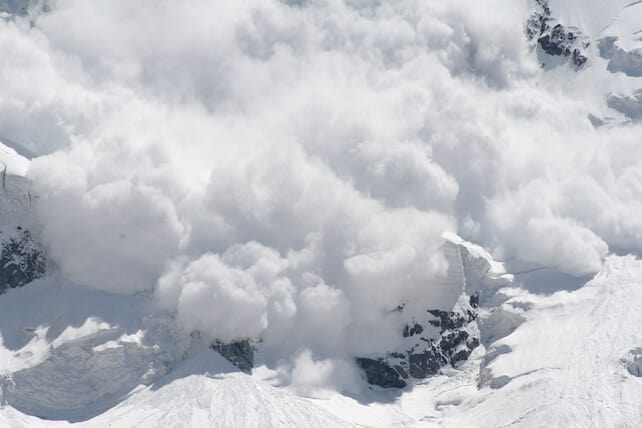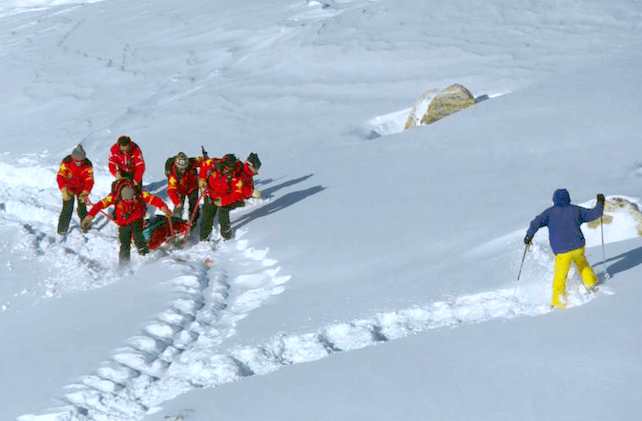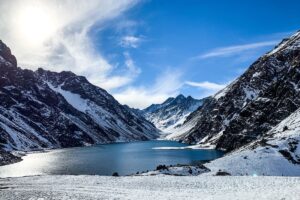
AT LAST! After a piste-poor Christmas, the Alps are covered in a thick winter blanket. There’s 80cm of fresh snow underfoot – with a lot more promised in the days to come. You just can’t wait to click into those super-fat powder skis and cut first tracks.
BUT WAIT! Think avalanche. Recklessness combined with ignorance too often takes a fatal toll in the mountains and, already, this winter is no exception.
Of course, such enthusiasm for skiing or snowboarding is understandable. You’ve paid your money, here it is, and you want to get on with it. But take a cool, hard look before you leap.
At the time of writing, six days have passed since the first proper flakes of the winter made their tardy appearance in the Savoie and Haute Savoie. Already, in France alone, five people have died and two remain critically injured in hospital. Last season 45 lives were lost to avalanches in France.
With a warning of 3 or even 4 out of 5 on the recognised European Avalanche Danger Scale, no-one should be venturing off-piste at all until the pack has stabilized. Except perhaps on the very gentlest of slopes with a gradient of way below 30 degrees.
In Val d’Isere on Tuesday, two groups were buried in up to 150cm within an hour on different parts of the mountain, resulting in two deaths and two life-threatening injuries. Both parties had triggered giant slab avalanches created by the combination of deep fresh snow and high winds on a slippery frozen base.

Another skier died in the Maurienne Valley near St Sorlin/Les Sybelles, while two climbers were killed in Chamonix. On the same day in Courchevel, the rescue services rushed to no less than eight different avalanches triggered by skiers (fortunately with no serious consequences).
In Tignes, local freestyle star Theo Lange had a near miraculous escape – recorded on his head cam while skiing a couloir off the Col du Palet. He said afterwards: “I was scared. In a few minutes I saw all my life flash before me.” Here’s the video of his attempted descent.
The Savoie local government has called on everyone to take special care: “The recent and important snowfalls have landed on a very hard base and they are going to continue throughout the week, creating a raised risk of avalanche (level 4 out of 5) on the mountain ranges in the department.”
So what can you do to stay safe?
Learn the basics of snowcraft from a course such as those provided by Henry’s Avalanche Talk. Check the avalanche risk in your resort and get local advice.
Ski with a local qualified guide
Make sure you are fully equipped with transceiver, probe, and shovel. Check the battery level on your bleeper, turn it on, and check those of your companions. Ideally, carry an airbag.
But remember, while these bits of kit may help you and your party, the best way to survive an avalanche is not to get caught in one in the first place.
Also see our features on avoiding injury this winter, keeping safe on the mountain, and a sobering survivor’s tale.













It’s an avalanche transceiver, not a “bleeper”. No use checking just your batteries unless you actually check that the transceiver is emitting a signal and working in receive mode too. That goes for everyone in the party.
If you read the post you’ll see that I called it both transceiver and bleeper. I also said that you need to check that it works! Beeper, bleeper, transceiver…regardless of what you call it, what matters it that you’ve got one and know how to use it.
Not getting caught in one in the first place would be good but why don’t you campaign for all lift passes to have a built in transceiver system such as the Recco one
Recco is an excellent system. For those who don’t know, this is a chip, often built into skiwear, that can be ‘read’ by a detector carried by rescue teams or by a helicopter-mounted gun to locate people buried underneath the snow. Unfortunately, the success relies upon the arrival of a helicopter or the rescue team at the accident scene. In the case of the helicopter, this rarely takes place less than 15 minutes after the person has been buried and the chances of survival diminish rapidly after that period. That said, this is a positive idea, Paul, and I will certainly raise it with resorts that we work with. I have no idea what the chip costs but I imagine it would raise the cost of each lift pass by maybe €5-10….a small price to pay to save lives. Don’t forget that Recco is not a substitute for a transceiver.
Are we sure that the thousands of people who don’t risk their lives off-piste would each want to spend an extra few quid on their lift pass in order to save the handful who do the small cost of a bleeper – sorry, transceiver – and give them instead the false sense of security created by a passive system which saves very few lives?
Agree with you John Yates-Smith, the off piste guides who can read the mountains and keep those skiers safe should be the ones who are paid— for safety from avalanche — not the ski pass chaps!